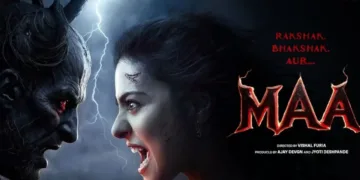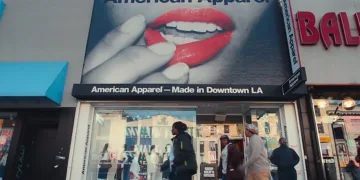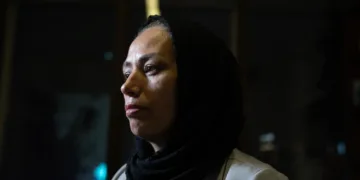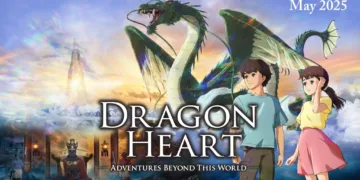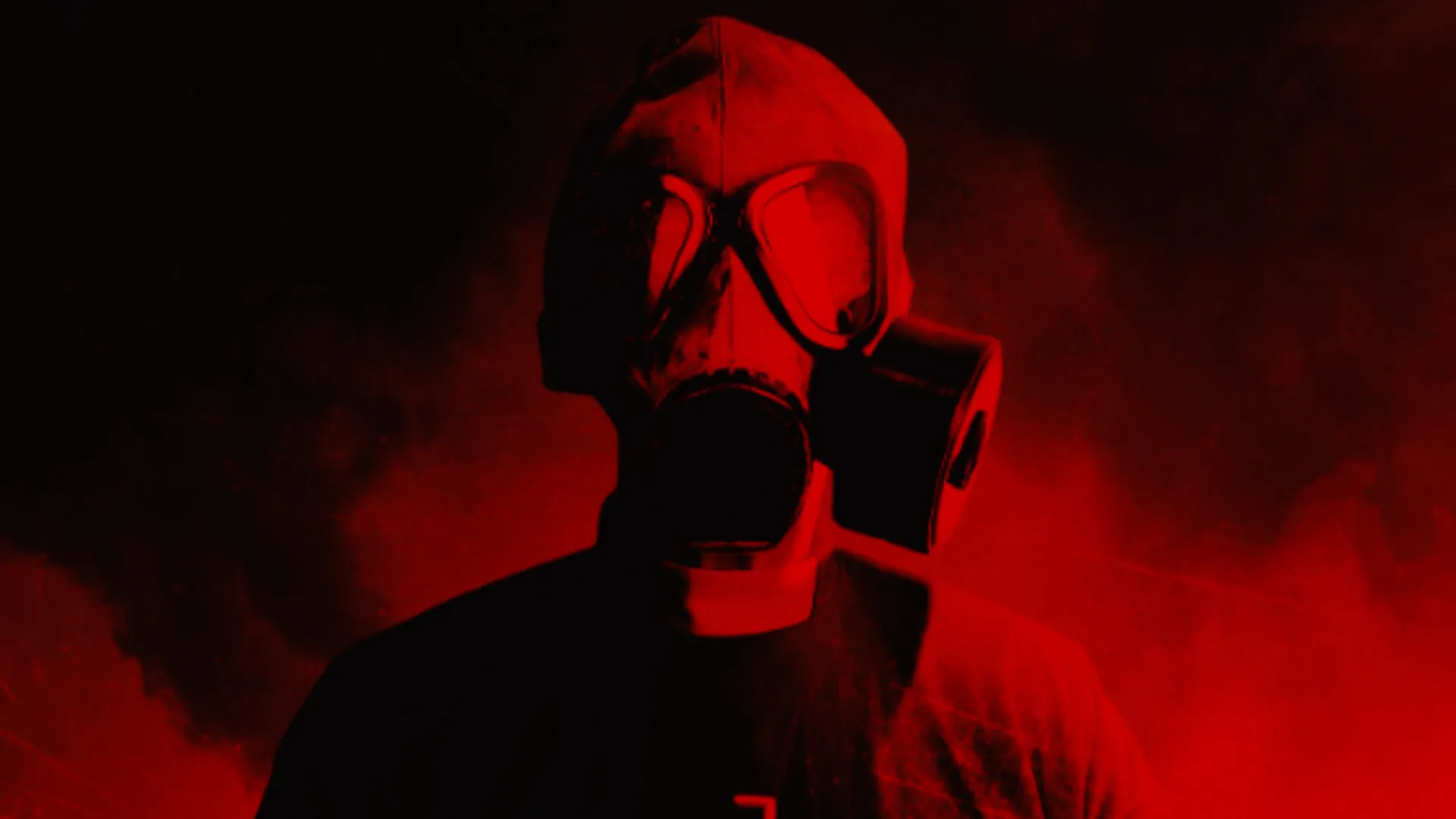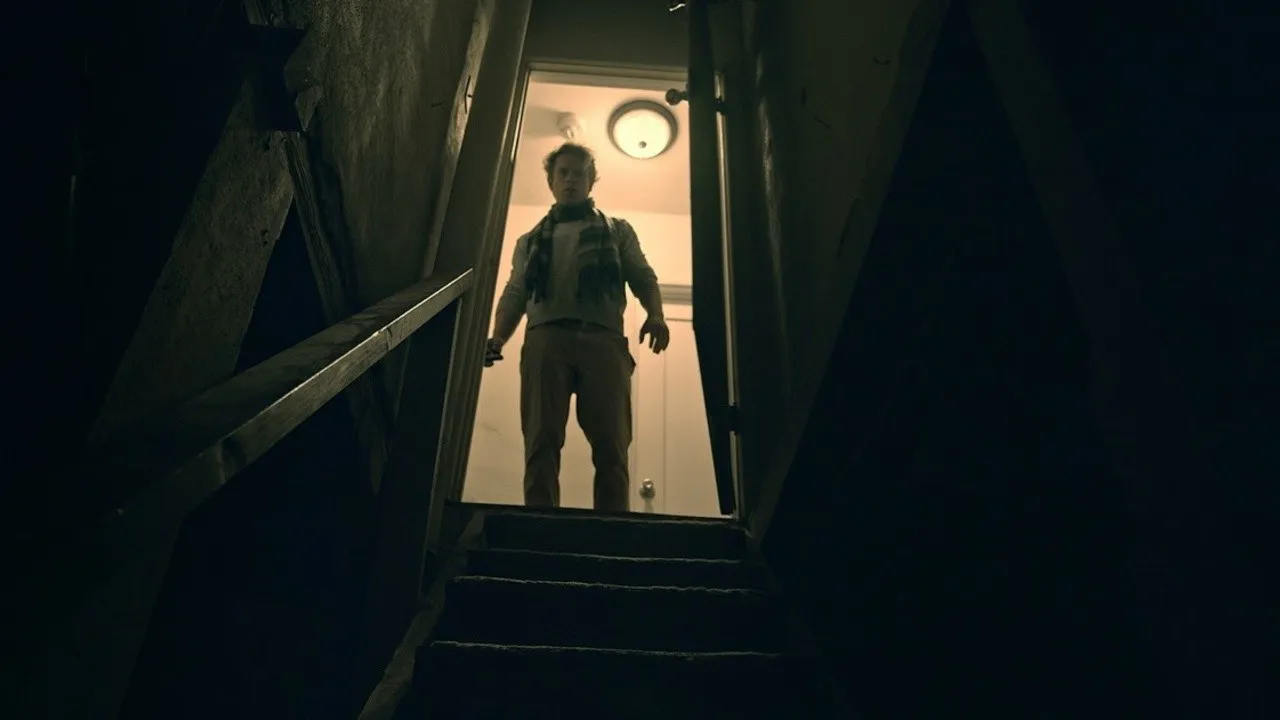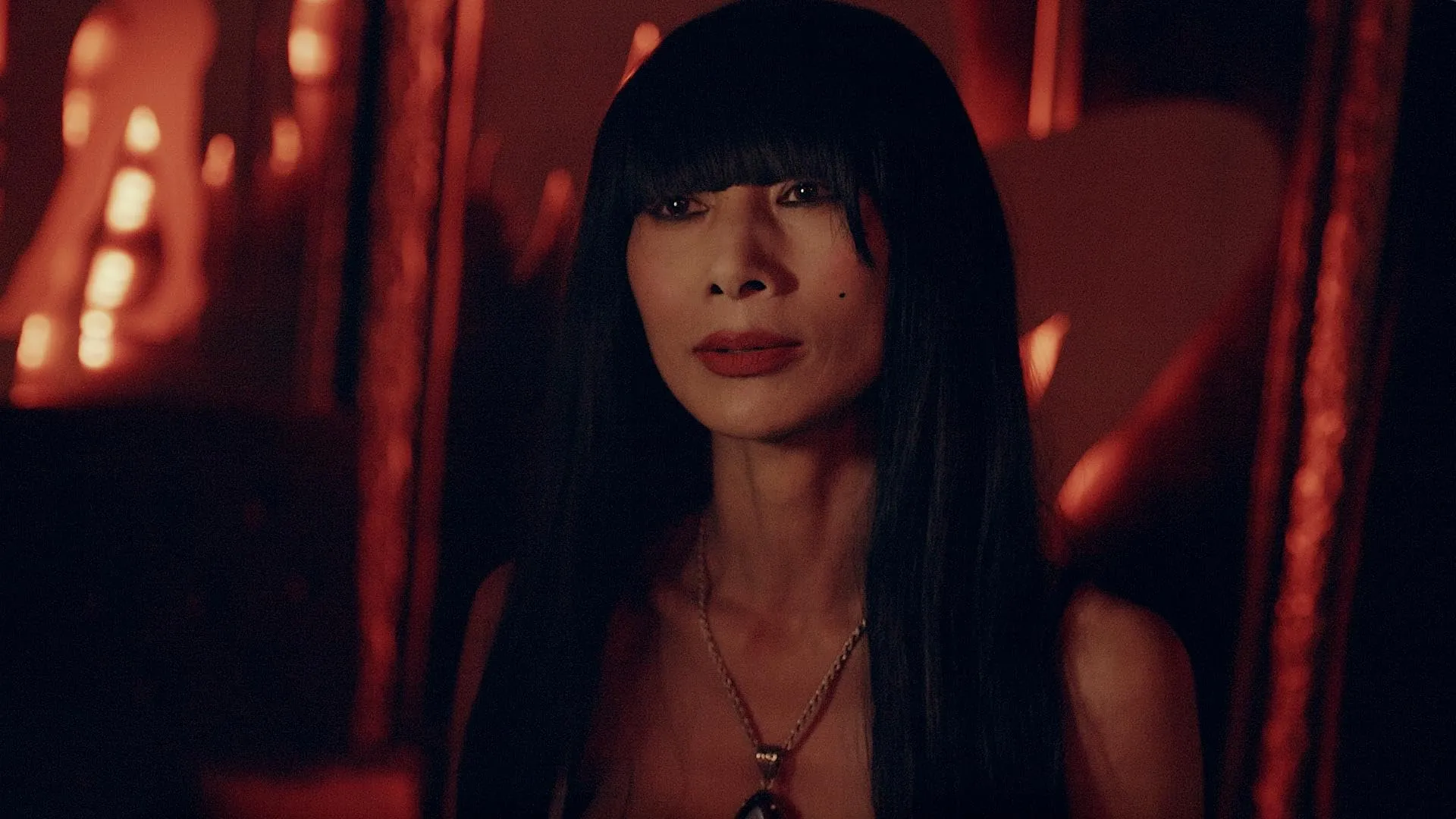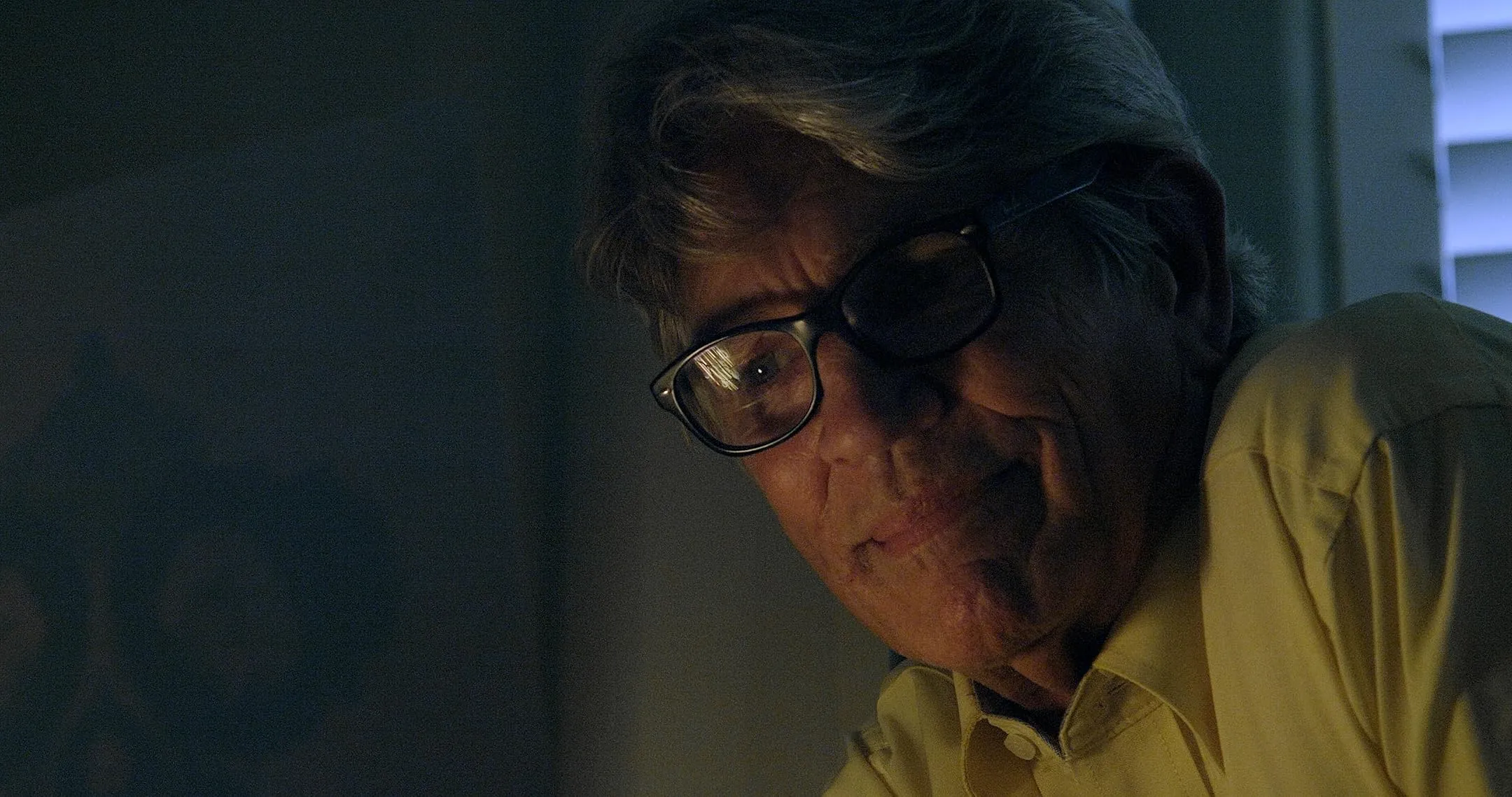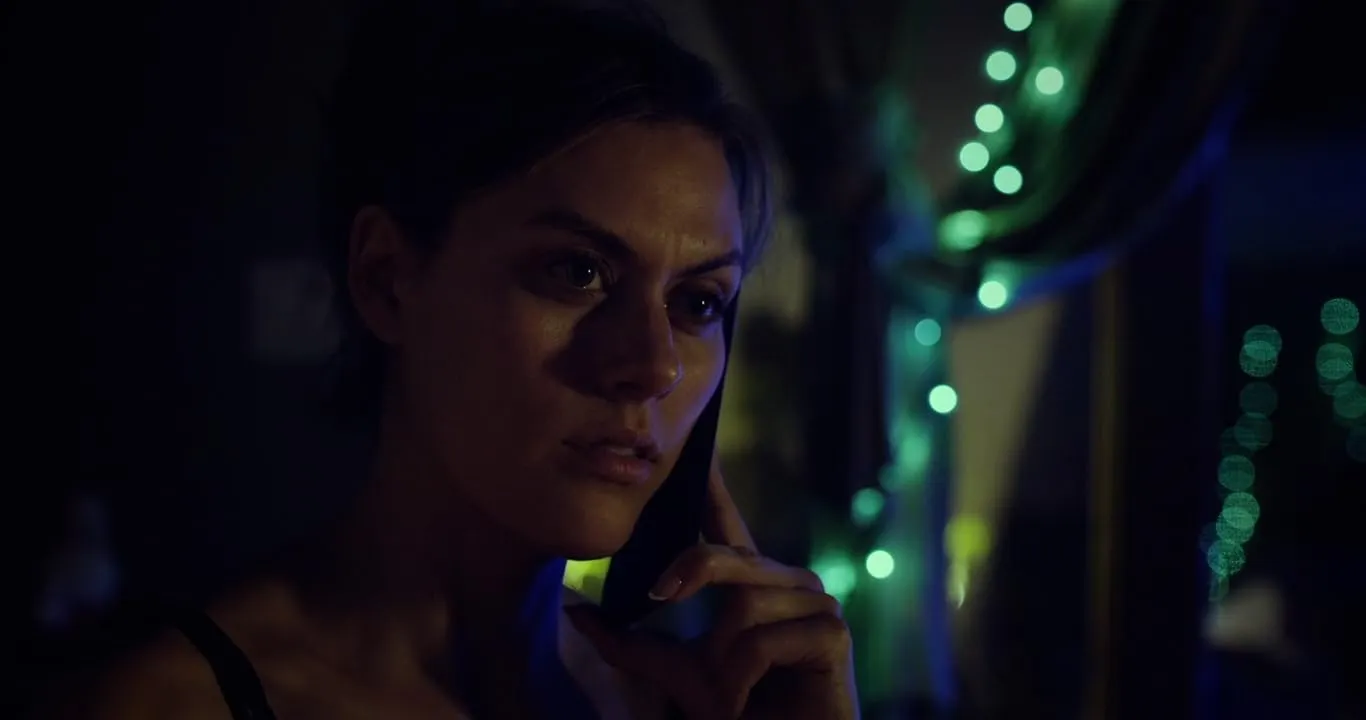In “Down Below,” we meet Salem, a man whose life has descended into despair due to a false charge of horrible crimes. The narrative begins on the 20th anniversary of a horrifying Christmas Eve massacre at St. Agnes Church, a trauma that haunts the town and its citizens like a specter. Mr. Monday, the evil preacher, reappears, embodying the past’s unresolved trauma—a figure born of societal negligence and individual malice.
The film’s scenario is compelling: Salem, struggling with the vestiges of his shattered identity, becomes entwined with Karisma, a call girl whose nightmares mirror the darkness of their shared history. Their link, which is fraught with tension, serves as a lifeline, but it also reflects their shared quest for redemption—an investigation of how trauma simultaneously unites and isolates.
Salem’s dilemma is emblematic of a larger societal issue: the fallibility of public opinion and the ease with which one can become a pariah. His demise is triggered by an enigmatic entity known as ‘Fata Morgana,’ a moniker that conjures up illusions and misleading looks. This linguistic choice emphasizes a key topic of the film: the specter of truth in a world riddled with distortion.
As Salem works to clear his name, the reappearance of Mr. Monday serves as both a literal and figurative enemy. Monday, a hideous incarnation of past atrocities, represents not only Salem’s demons but also the community’s unresolved trauma. This interplay of past and present promotes a discussion about the cyclical nature of violence and the societal tendency to bury rather than confront its ugly past.
The film’s architecture is a labyrinthine exploration of the psyche, reminiscent of films that grapple with similar themes of redemption and guilt—think “Mulholland Drive” meets “Taxi Driver,” where the urban landscape becomes a character in its own right, reflecting the internal chaos of its inhabitants. In this way, “Down Below” provides a complex tapestry of symbolism, suggesting that salvation may lay not in escape but in confronting the shadows within and without.
The Fractured Psyche: Character Dynamics in “Down Below”
In “Down Below,” Salem’s journey is a moving investigation of the human condition, marked by a desperate search for redemption amid betrayal and societal judgment. Salem, played by Spyder Dobrofsky, is a modern-day Sisyphus, constantly heaving his boulder of guilt uphill only to see it roll back down each time he attempts to regain his past.
His reasons are multifaceted, oscillating between despair and determination. The weight of his bogus allegations (a sarcastic homage to the zeitgeist of “cancel culture”) rests heavily on his shoulders, converting him from a victim to a symbol of societal scapegoating.
Dobrofsky’s performance is complex. There are moments when his emotion comes through, but there are occasions when one can question whether he aims for depth or simply skims the surface of his character’s inner struggle. His performance enables the audience to empathize while also leaving cause for doubt—has he completely embraced the complexities of his part, or is he merely a vehicle for the film’s larger themes?
Karisma, played by Alexis Knapp, serves as Salem’s anchor to reality, but she, too, is entangled in a web of trauma and remorse. Her character embodies the “fallen woman” archetype, which is as old as film (and possibly as worn out). However, Knapp gives Karisma a sense of agency, making her more than just a passive reflection of Salem’s difficulties. Their relationship is fraught with conflict, oscillating between empathy and exploitation, raising concerns about the nature of survival in a world that frequently forces people against one another.
Eric Roberts’ portrayal of Dr. Rockeby provides another degree of narrative complexity. He represents the jaded psychiatrist archetype, yet his portrayal hints at deeper depths of complicity and moral uncertainty. One could argue that he represents the institutional flaws that allow such tragedies to occur—an observer rather than a change agent, similar to the audience.
Meanwhile, Doug Jones plays Mr. Monday, a rare human character that captures the essence of both a real and figurative monster. His performance is frightening, embodying Salem’s fears that lurk in the shadows. Jones’ ability to elicit fear without using prosthetics is a testament to his talent, reminding us that the most terrifying individuals reflect our vulnerabilities.
These characters constitute a mosaic of despair and resilience, each reflecting the film’s overall reflection on trauma and the human experience. Their interactions capture the film’s essence: an investigation of how people navigate their broken worlds while grappling with the ghosts of their pasts.
Veils of Smoke: The Visual Language of “Down Below”
“Down Below” has a visual style as mysterious as its narrative. The film uses a subdued palette with moments of harsh contrast, creating a sense of discomfort that mirrors Salem’s fragmented psyche. The use of lighting is especially noteworthy—shadows loom wide, enclosing characters in a cloud of mystery. This chiaroscuro effect heightens suspense and reflects the characters’ interior struggles, suggesting that darkness is more than just a backdrop in the film.
Smoke diffusion, a technique that emphasizes or hides, is heavily used here. While it provides a dreamy (or possibly nightmare-like) feel, one could argue that it occasionally borders on the unnecessary.
The intentional blurring of edges could represent the haziness of memory and perception, but it risks alienating viewers who prefer precision in storytelling. Is it a brilliant reference to how trauma alters reality, or does it obscure the film’s intention? This conundrum may linger in one’s mind long after the credits roll.
The gas mask motif appears as a powerful emblem throughout the film. It serves as a visual depiction of concealment—both of identity and truth. The mask is more than simply a relic of the past; it is a modern metaphor for the emotional and psychological barriers we build in the face of trauma. Characters encounter it at pivotal moments, suggesting that the masks we wear in our daily lives are intrinsically related to the act of addressing one’s demons (or avoiding them).
In this sense, the cinematography complements the film’s thematic themes, creating a complex tapestry of symbolism that speaks to larger societal issues. The complex dance of light and shadow, clarity and diffusion, portrays the essence of a world in which reality is as flexible as memory. One can’t help but wonder: in a world increasingly defined by the facades we present, both online and offline, what truths are concealed behind our masks?
The Labyrinth of Redemption: Themes and Narrative in “Down Below”
At its core, “Down Below” is a disturbing meditation on trauma, guilt, and the sometimes futile quest for redemption. The film delves into the depths of human despair, examining how personal and communal past sins influence the present.
Salem’s journey is emblematic of the greater societal tendency to avoid individuals marked by scandal, forcing us to confront painful facts about our tendency for judgment. One may argue that the film mirrors modern society, in which public humiliation has become a blood sport.
The specter of organized religion remains big, particularly through the character of Mr. Monday, whose malevolence recalls historical crimes committed in the name of faith. This perspective is contemporary and ageless, suggesting that the institutions intended to provide comfort can simultaneously perpetuate cycles of violence and trauma. The church in “Down Below” is not a sanctuary but a reminder of the darkness that may infiltrate the sacred—a powerful representation of how faith can be used against the helpless.
Narratively, the film uses a non-linear framework that encourages viewers to solve a puzzle rather than passively ingest a simple plot. This method can be thrilling and disconcerting, similar to navigating a labyrinth (a reference to the tale of the Minotaur lurking in the shadows?).
As characters move in and out of focus, their arcs intersect in ways that call into question standard concepts of protagonist and antagonist. Their relationships’ complexity creates a tapestry of interwoven traumas, with each thread revealing deeper levels of despair and hope.
Salem’s interactions with Karisma and the supporting cast weave a web of narratives culminating in a climax fraught with tension. The film’s inability to deliver simple answers (or even clear resolutions) mirrors the tangled reality of life, where closure is often elusive.
Each character’s struggle reflects the wider existential challenges we all face, raising concerns about the nature of redemption. Is it something we can accomplish, or just an ideal we pursue while tormented by our pasts? As the film progresses, we are left to grapple with these uncertainties, encouraging reflection on our lives and the masks we wear in the face of societal censure.
The Soundscape of Despair: Music and Audio in “Down Below”
Ambrose Soehn’s score for “Down Below” is a disturbing tapestry of sound that immerses the audience in a dreadful and sorrowful environment. The musical contributions range from beautiful melodies to harsh dissonance, matching the film’s emotional terrain.
Soehn appears to realize that silence can be as powerful as sound—quiet moments interrupt the score, allowing the weight of Salem’s predicament to be felt fully. It’s as if the music is a character lurking in the shadows, affecting our emotional responses and reflecting Salem’s mental instability.
The sound design further enhances the film’s tone, which employs motifs that repeat throughout the narrative. The constant sound of gas masks and faraway whispering reminds the characters of their emotional and psychological confinement. These audio aspects give the film’s surreal visual approach a palpable reality, transforming sound into a vehicle for examining deeper themes of trauma and memory.
In a world where noise frequently drowns out meaning, “Down Below” skillfully uses sound to elevate its narrative, resulting in a dissonant yet unified ambiance. The interplay of score and sound design enhances the viewing experience. It encourages spectators to explore sound’s deep impact on our knowledge of the human condition—truly a sonic reflection of our internal battles.
A Descent into Darkness: Overall Tone and Audience Engagement in “Down Below”
“Down Below” creates a frightening atmosphere long after the credits roll, rich in psychological depth and existential dread. The film’s atmosphere is tense, like traveling through a fog-shrouded woodland, where every rustle foreshadows undiscovered horrors.
This methodical pacing and sense of foreboding defy traditional viewer expectations; don’t anticipate jump scares or neatly tied-up resolutions here. Instead, the film challenges the audience to grapple with discomfort, forcing them to confront the murky waters of guilt and redemption.
In doing so, “Down Below” engages the audience on numerous levels, necessitating active engagement over passive consumption. The uneven narrative style may frustrate some, but it serves a purpose: it mirrors the fragmented nature of trauma and memory. One may find oneself questioning the reliability of each character, much as we question the narratives offered to us in our daily lives (think of social media’s filtered realities).
However, the complexity may alienate mainstream viewers who want a straightforward horror experience. While genre fans may like the film’s complex symbolism and philosophical ideas, general audiences may find it confusing or pretentious. The film’s ambivalence—its inability to provide easy answers—may result in split views, with some viewers considering its importance and others simply shrugging and moving on.
Finally, “Down Below” is a testament to the darker sides of human experience, appealing to those willing to engage with its unpleasant themes and evocative storytelling.
The Review
Down Below
"Down Below" is a frightening exploration of trauma and redemption that expertly combines psychological depth and a bewildering narrative framework. Ambrose Soehn's score and the film's rich visual symbolism heighten the uncomfortable atmosphere, forcing spectators to confront their uneasiness. While its complexity may turn off some, those prepared to engage with its themes will find a thought-provoking experience that will stay with them long after watching it. A film that investigates the shadows we all carry, it serves as both a mirror and a warning.
PROS
- Haunting atmosphere that immerses viewers in psychological tension.
- Complex themes of trauma and redemption that provoke thought.
- Strong performances, particularly from Spyder Dobrofsky and Alexis Knapp.
- Innovative use of sound design and musical score to enhance emotional depth.
- Non-linear narrative that invites active engagement and interpretation.
CONS
- The disjointed storytelling may frustrate some viewers seeking clarity.
- Ambiguous resolutions might leave audiences feeling unsatisfied.
- Heavy themes may be too intense for casual moviegoers.
























